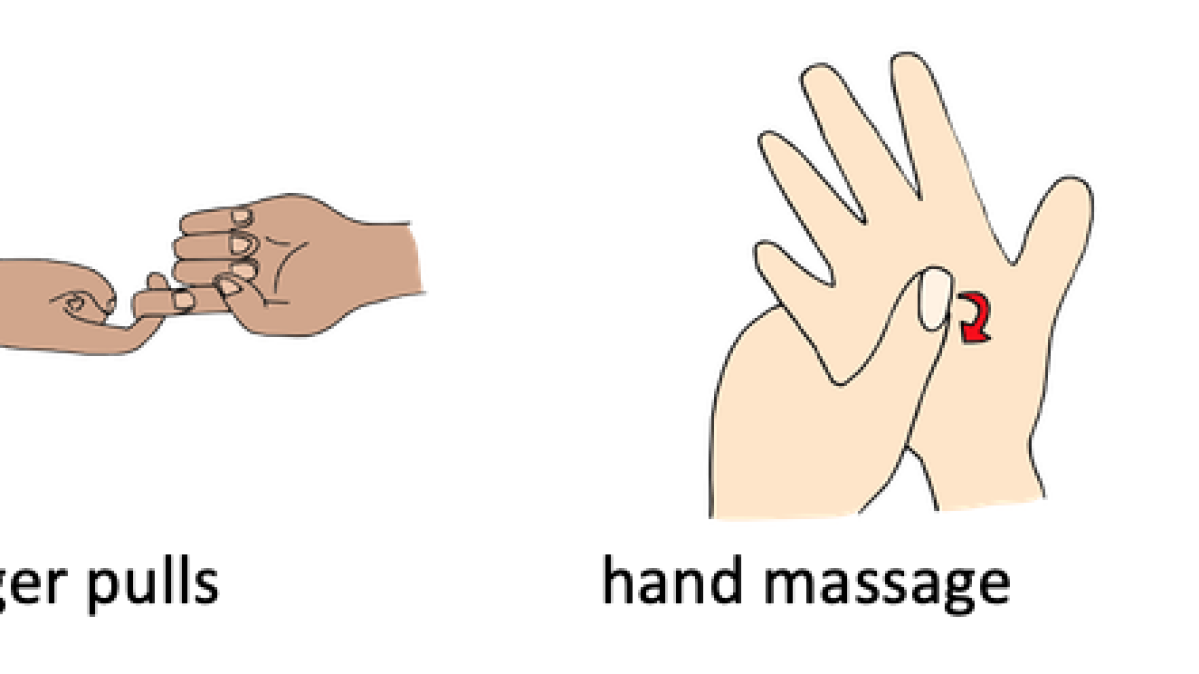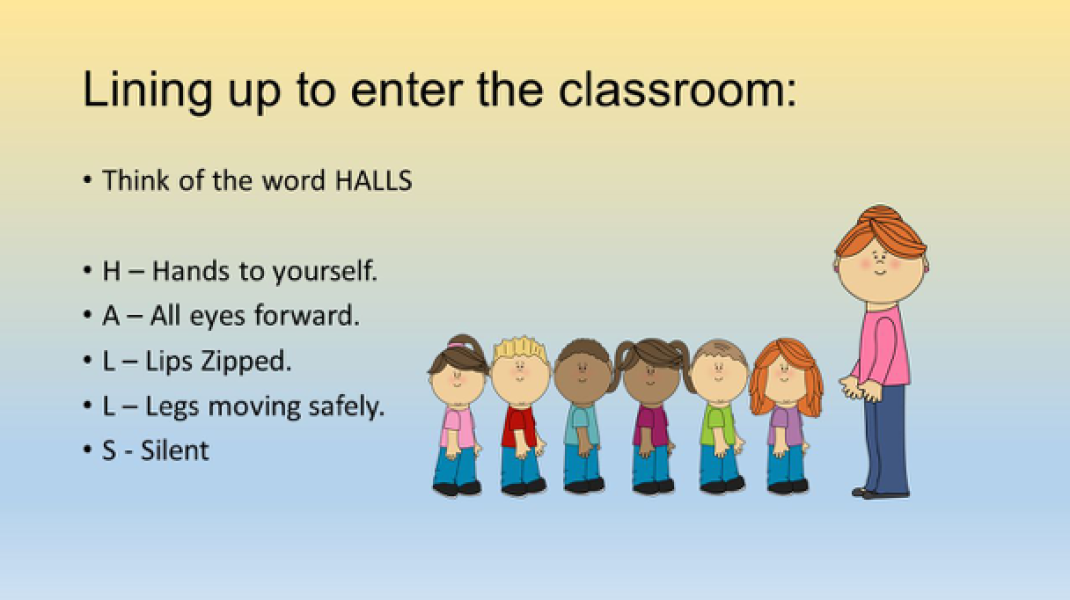Circle Time
- Use carpet squares so that each student stays in his/her own bubble
- Have a few alternate seating options – Bilibo seats, rocking chair
- Have deep pressure tools available - i.e. weighted lap pads
- Establish a routine and have a visual schedule to support it. Over time, a child will be better able to anticipate the length of time and expectations associated with sitting at the carpet if there is a consistent routine.
- Include movement songs –i.e. Where is Thumbkin, If You’re Happy and You Know It, Jolly Phonics
- Add rhythmic movements to counting i.e. clapping hands, clapping thighs
- Use fidget tools as necessary
- Use carpet time heavy work break ideas
-
Pre-teach 5 things I can do to help me stay focused

Recess
- Encourage active play: running, jumping, and playground equipment
- Teach a variety of active games so students have a pool of options: skipping rope, tag, four square, ball games etc.
- Provide movement break - recess challenges
Transitions
Transitions between activities or locations are often problematic for students with sensory processing difficulties, which stems from challenges in sensory regulation. Their brain and body is regulated for the current activity and environment, but moving to a new activity/environment will expose them to a whole new set of different sensory experiences. As such, the transition period elicits dysregulation for the student, which may be manifested by excessive movement, refusing to change activities, disruptive behaviors, talking loudly, or other inappropriate behaviors.
- Pre-warn of upcoming transition – use visual timer
- Have a visual schedule of the day so that upcoming activities are expected
- Once students are comfortable with the classroom routines, introduce a “change of plan” visual and practice using it.
- Review the visual schedule with the classroom at the begin of each day and answer questions
- Incorporate movement into transitions; either a movement break or transition ritual i.e. transition song, counting, deep breathing, quick game of Simon Says
- Have an activity ready on children’s desk when they walk into the classroom to focus attention and encourage a calmer environment
- Play calming music during transition
- Use a chime or low tone noise such as a gong instead of talking over classroom noise
- Have a transition object: i.e. student carry a book to the library, a beanbag to the gym etc.
Instructional Time
Sitting still and focusing their attention on the teacher’s voice can be very challenging for all children, especially in our digital world where they are now used to fast-paced multi-sensory information.
- Tap into the vestibular system (sense of balance) to help maintain alertness and attention: sitting on an exercise ball/Sit Fit cushion
- Add a movement break right before instructional time
- Add movement during instructional time: walk and chat
- Add visuals to oral explanation
- Teach the children what "paying attention" means and how it looks.
- Remove distractions – visual clutter, nearby objects
- Be mindful that some children may be moving but are actually paying attention
- Have clear rules i.e. no getting up when the teacher is talking
- Have clear expectations i.e. I will be talking for the next 10minutes, I expect… and then we will….
- Use an FM system if available to help focus attention to the teacher’s voice
- Consider allowing snacks during instructional time

Lining Up
The main issue with lining up is the increase in unexpected sensory input, including noise and touch. It also can trigger children who are easily dysregulated.
Use lining up tools so that it is an organized activity, therefore decreasing noise level and accidental touching/pushing/bumping into each other.
- stand in line in alphabetical order
- assign each student a number. When it is time to line up, students must quietly get in line according to that number. Eventually students will know their spot and you will see that there will be no rushing or cutting in line.
- say a fun chant or rhyme “Hands on hips, zip up lips, standing tall, ready for the hall.”
- Put students into line by various categories. Shirt color, hair color, eye color, pets, siblings, birth order, favorite sport, favorite ice cream flavor, birthday month, etc.
Gym Time
The gym is usually a challenging environment for individuals who are sensitive to noise and touch. The echo in the gym exacerbates other overwhelming gym sounds such as shoes squeaking, whistle blowing, children shouting. In addition, many gym games can be unpredictable (touch from others, hit by ball etc.) and therefore seem threatening. The gym can also affect the behaviour of students who have difficulty with self-regulation. They tend to get excited with the games/activities and then are unable to return to a calm and organized state.
Have a visual schedule of the gym activities for that day for predictability
Start every gym class with a physical activity that involves deep pressure: running laps, sit ups, push-ups, jumping jacks etc. Be mindful that different students need different intensity/duration of activity to get regulated. For example, running 2-3 laps around the gym may not be enough for all students to get regulated. A better approach may be to suggest a minimum of 3 laps and a maximum of 6 laps if you need it.
End every gym class with a relaxation activity
Teach strategies to children with tactile sensitivity
- play tag closer to the wall to avoid being touched from behind
- be the goalie where you are less likely to get pushed/touched by other students
Offer earplugs if auditory sensitive
Allow students a break as needed – i.e. bathroom or water fountain. Just knowing that there is an out can be enough to ease the stress of sensory overload
Independent Seat Work
If a student is having difficulty focusing, ask them what they need. It may be related to a sensory need but may also be due to the task being too challenging.
- Have a virtual aquarium on the Avervision to provide a visual concentration point/anchor point
- During longer work periods, call out “Stand for five!” – letting kids know that they must work standing up for five minutes
- Encourage alternate seating options
- Participate in a movement break followed by a relaxation strategy before independent seatwork tasks
- Consider allowing snacks. It may help some students focus and stay on task for longer periods.
- Have the option of working in a quieter space/location such as a desk just outside the classroom doors.
- Encourage total silence to maintain a calm environment.
- Have a visual timer of the expected focus time
Assemblies
- Pre-teach 5 things I can do to help me stay focused
- Preferential seating as needed – some students may need to sit at the end of a line and may prefer sitting on the same side as the exit to feel more comfortable
- at the back of the gym so that can lean on the wall for deep pressure
- on a chair to delineate boundaries - Offer noise cancelling headphones as needed
- Bring a fidget tool – with clear rules and expectations
- Offer deep pressure tool: weighted lap pad
- Some students may need to enter the gym at a different time:
- First: to get acclimatized to the environment
- Last: to avoid sitting and waiting too long - Have the class participate in a movement break – deep pressure before the assembly
Coat Room
- Some children may be easily distractible and cannot focus in a busy/noisy coatroom. Send them a couple of minutes before the other children to get started.
- Have a visual to guide students through the steps.
- Ensure that students with sensitivities (touch, noise etc.) have their hook at the end of the row.

